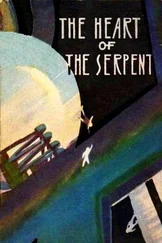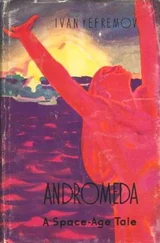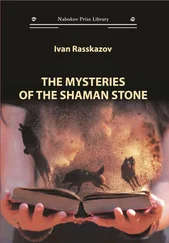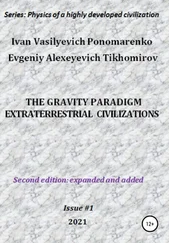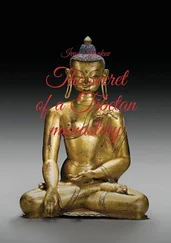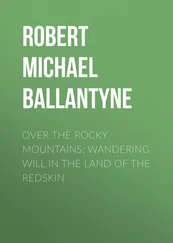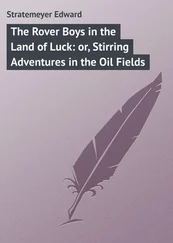Pandion often admired Yakhmos’ stone which, Kidogo insisted, had in the end brought them to the sea, for Kidogo naively believed in the magic properties of things.
The clear transparency of the hard stone gave Pandion the idea of carving a cameo. The stone was harder than those normally used for such purposes in Hellas where they were polished with emery stone from the Island of Naxos, in the Aegean Sea. Suddenly he remembered that he had stones that were harder than anything else in the world, if the old chief of the Elephant People was to be believed.
Pandion took out the smallest of the stones from the south and carefully drew its sharp edge along the edge of the bluish-green crystal — a white line appeared on the hard surface of the stone. He pressed harder and cut a deep furrow such as a chisel of black bronze would cut in soft marble. The unusual hardness of the transparent stones from the south was in all truth greater than anything then known to Pandion. He had magic tools in his hands that made his work easy.
Pandion smashed the little stone and carefully collected all the sharp fragments; with the aid of hard pitch he fixed them into wooden handles. This gave him a dozen chisels of various thicknesses suitable both for rough carving and for the cutting of fine lines.
What should he carve on that bluish-green crystal that Yakhmos had obtained from the ruins of a temple thousands of years old and which he had carried safely to the sea, the sea for which it had served as a symbol during the long years of stifling captivity on land? Pandion’s head was filled with vague ideas.
He left the village and wandered about alone until he reached the sea. For a long time he sat on a rock, staring into the distance or watching the shallow water that ran across the sand at his feet. Evening came and the shortlived twilight robbed the sea of its sheen; the movement of the waves could no longer be seen. The black velvet of the night became more and more impenetrable, but at the same time big, bright stars lit up in the sky and the celestial beacons, rocked in the waves, brought life to the dead sea. Pandion threw back his head and traced the outlines of constellations unknown to him. The arc of the Milky Way spread across the sky like a silver bridge, just as it did over his own country, but here it was narrower. One end of it was split up by wide dark stripes and separate dark patches. To one side and below the Milky Way two nebulous star clouds gleamed with a bluish-white light. (* The Large and Small Magellanic Clouds, big star clusters and nebulae in the Southern Hemisphere. ) Close beside them he could see a huge impenetrable black patch, shaped like a pear, as though a gigantic piece of coal hid all the stars in that part of the sky. (** The Coalsack — a concentration of black, opaque matter in the sky of the Southern Hemisphere.)
Pandion had never seen anything like it in the sky at home in the north and was astonished at the contrast between the black patch and the white star clouds. Suddenly the young Hellene sensed the very essence of Africa in that black and white contrast. In its direct and clear-cut crudity this was the combination which made up Africa, its whole aspect, as Pandion conceived it. The black and white stripes of the extraordinary horses..? the black skin of the natives, painted with white colour and accentuated by their white teeth and the whites of their eyes; articles made from black and pearl-white wood; the black and white columns of the tree-trunks in the forest; the brightness of the grasslands and the darkness of the forests; black cliffs with white streaks of quartz — all these and many other things passed before Pandion’s eyes.
His homeland on the poor rocky shores of the Green Sea was quite different. There the stream of life was not a tempestuous flood; its black and white sides were not in such open conflict.
Pandion stood up. The boundless ocean, on the other side of which was Oeniadae, cut him off from Africa, the country that lay hidden morosely behind the night shadows of the mountains and that in his heart he had already left. In front of him the reflections of the stars ran across the waves, and away there in the north the sea joined his native Oeniadae where Thessa was standing on the shore. For the sake of returning home, for the sake of Thessa, he had fought and struggled through blood and sand, through heat and darkness, against countless dangers from man and beast.
Thessa, distant, loved and unapproachable, stood like those hazy stars above the sea, where the edge of the Great Bear just touched the horizon.
It was then that the solution came to him: on the stone, the enduring symbol of the sea, he would create the image of Thessa standing on the shore.
In a frenzy Pandion squeezed the chisel in his hand until the strong stick broke. For several days he had been working on Yakhmos’ stone with beating heart, stemming his impatience with difficulty, at times drawing a long line with confidence, at others cutting tiny marks with infinite care. The image was becoming clearer. Thessa’s head was a success — that proud turn of the head stood before him as clearly as it had done in the hour of farewell on the seashore at Cape Achelous. He had carved the head in the transparent depths of the stone, and now the frosted blue face stood out in sharp relief on the mirror-like surface of the stone. Locks of hair lay in easy free lines where a clear-cut arc marked the curve of the shoulder, but further — further Pandion suddenly found that he had lost his inspiration. The young artist, more confident in himself than he had ever been before, cut in bold sweeping lines the fine outlines of the girl’s body, and the beauty of the lines told of the success of his undertaking. Pandion cut away the surrounding surface of the stone to bring his carving into even sharper relief. It was then that he suddenly realized that it was not Thessa that he had drawn. In the lines of the hips, knees and breast the body of Iruma came to life, and there were certain features that undoubtedly owed their existence to his last impression of Nyora. Thessa’s figure was not the body of the Hellene girl — Pandion had created an abstract image. He had wanted something else, he had wanted to depict the living Thessa” that he loved. He tried hard to get rid of the impressions of recent years by a supreme effort of memory, but it proved impossible, the new was still too fresh.
Pandion felt much worse when he realized that once again he had proved unable to breathe life into an image. While the figure was still in outline, there had been life in its lines. As soon as the artist tried to bring the flat figure into relief, however, it turned to stone, it became cold and inert. And so, after all, he had not fathomed the secrets of art. This image, too, would remain lifeless! He would not be able to put his ideas into effect!
After he had broken the chisel in his agitation, Pandion took the stone and examined it at arm’s length. No, he could not create the image of Thessa, and the wonderful cameo would remain unfinished.
The sun’s rays shone through the transparent stone, filling it with the golden tinge of his native seas. Pandion had carved the figure of the girl on the extreme right-hand edge of the biggest surface of the stone, leaving most of it still untouched. The girl with the face of Thessa, but who was not Thessa, stood at the edge of the stone as though she were standing at the edge of the sea. The enthusiasm that had inspired Pandion to work from dawn to dusk, waiting impatiently for the coming of each new day, had left him. Pandion put the stone away, gathered” his chisels and straightened his aching back. The grief of defeat was made lighter by the realization that he could still create a thing of beauty… but, alas, how poor it was in comparison with the living being! He had been so immersed in his work that he ceased awaiting the return of his comrades. A little boy who came running up to him took Pandion’s mind away from his dark thoughts.
Читать дальше




